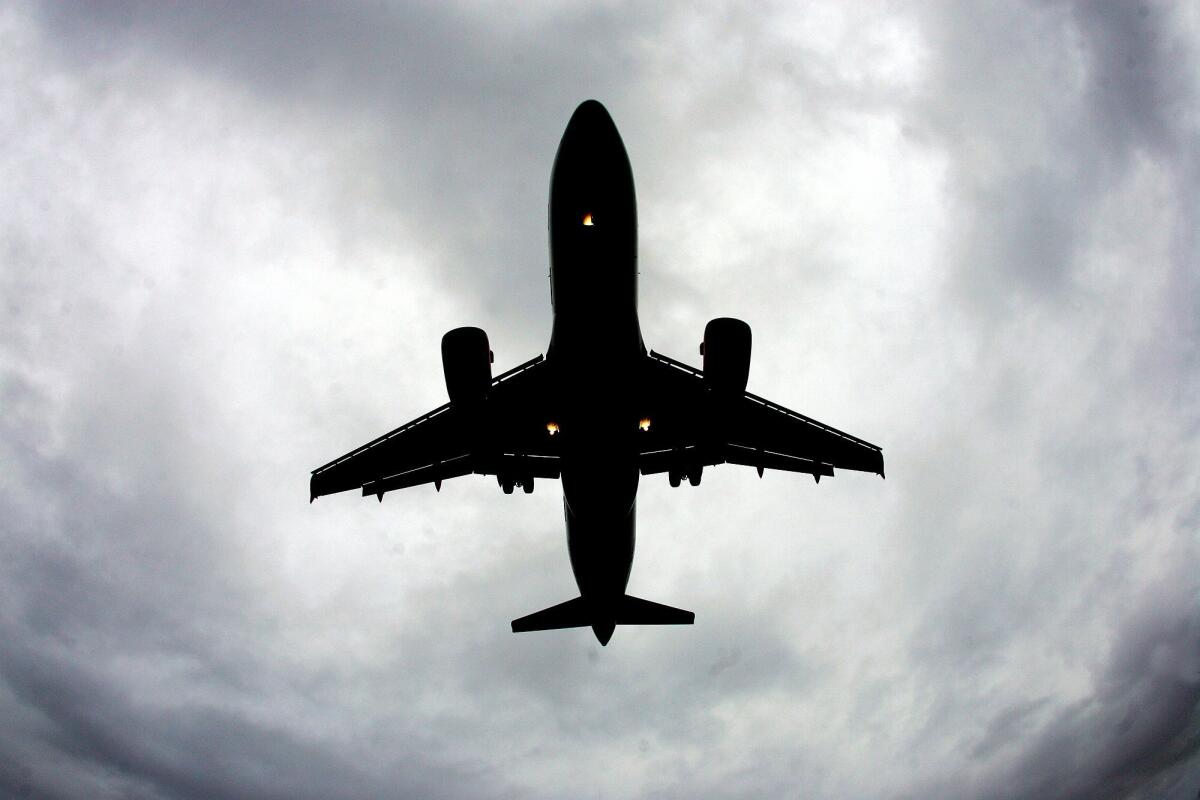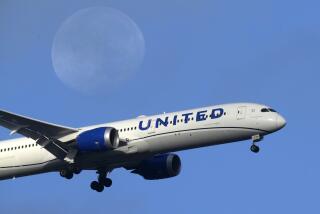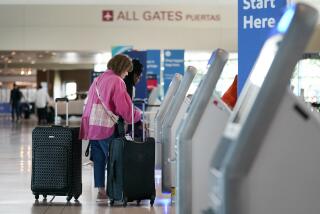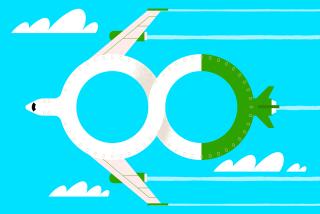Booking a flight using airline miles and cash is a good idea, but tricky

Question: I have just gone through a surprising experience in trying to book a flight from LAX to Charlotte, N.C., on American Airlines, using miles one way and purchasing the return ticket. I was incredulous when I found out that the one-way fare from Charlotte to LAX was priced at 120% of the round-trip fare. A call to AA confirmed the numbers, with an explanation that this can happen.
Hans Scharer
Newport Beach
Answer: It’s not much of an explanation, but it is true. Scharer’s experience with one-way tickets has been the rule, rather than the exception, although the good news is that the exceptions are increasing. Then there is the question of mixing miles and money and why more airlines don’t allow that for payments.
But first, the round-trip ticket dilemma. Financially, it makes more sense for an airline to sell a round-trip ticket. If you buy a one-way ticket on American, how does the airline know you’ll book your return ticket on it? It doesn’t, so it applies a little financial pressure, which does have a way of making you bend to the airline’s will.
My evidence for this next bit of wisdom is largely anecdotal, but I recently found that buying two one-way tickets can be cheaper than buying a round trip. Business took me to Miami in the spring; family took me to another part of the state that made a round trip to and from Miami inconvenient. I was sure I was going to pay the price because I would be flying home from a secondary market, from which fares are usually more expensive.
That wasn’t the case. In fact, my two one ways were slightly less than a round trip to Miami. Other travelers have told me that they also find this from time to time, so to your list of airline booking tasks, add checking to see whether you can buy two one ways for less than the cost of a round trip. Could waste your time. Could pay off.
What might have paid off even more for Scharer, however, would have been using a mix of points and cash (actually credit) to buy a round-trip ticket. That way, he would have had the advantage of buying a less costly round-trip ticket, and he could have used some of his points to defray the cost.
What a great idea — but for another airline. I asked American if it allowed the mix of miles and cash. No, came the answer. Why not? I asked. We just don’t do that, came the answer. Will it ever be possible? We have our hands full with the merger, came the answer. (American is still working on its merger with US Airways.)
Point taken. But other airlines do it — Delta (Miles + Cash) and Alaska (Money and Miles), for example. Isn’t that an ideal way to address the issue of too many miles chasing too few seats?
Not necessarily.
Although allowing fliers to use a mix of miles and cash does get some of those points off the airlines’ books — and those points show up as a financial liability, which can make investors nervous — the use of points plus cash doesn’t quite have the same “happy dance” effect that getting a ticket for nothing but miles is supposed to induce, said Jeffrey Berry, research director for Colloquy, which studies and reports on loyalty programs.
“Certainly if I got 30% off my ticket, that feels great, but what loyalty programs are trying to do is change behavior over the long term,” Berry said.
That change in behavior means a commitment to one airline or two at the most, which can give you the holy grail of tickets: one that costs you nothing (except fees and taxes). That’s when you know your loyalty has been suitably rewarded.
Loyalty programs, Berry said, also involve gamesmanship. If you’re of a certain age, his next point will resonate with you: “Think of the original S&H Green Stamps,” he said of the program that dates to the ‘30s. The stamps you got based on your grocery store spending were pasted into a book. You accumulated the filled books, then perused the catalog from which you could choose your reward.
“The catalog was a good part of the conversation,” Berry said. You were competing with your neighbors to see who could get that vacuum cleaner first, he said.
You either had enough books of those stamps to get the little sucker … or you didn’t. But if you did, you won! Maybe you were the first in your neighborhood to do so, thus becoming the object of admiring glances from your neighbors!
Same with an airline ticket. Would the glances be as admiring if you paid/spent 50,000 miles and had to pony up $200? And would your loyalty be as strong if you knew you could “split your spend” — that is, get points for buying tickets on United or American for dollars off?
That mileage/cash mix is a pragmatic use of miles, Berry said. But points should be mostly about aspiration.
And yet I’m never going to have enough miles in any program to buy that first-class ticket to Hong Kong, especially if frequent-flier miles increasingly are awarded based on how much the ticket costs, not on the miles flown.
That revenue-based model means the path to those “free” awards tickets becomes increasingly narrow for price-sensitive leisure travelers. And let’s be clear: We’re not like business travelers. We often choose which carrier to fly based on the cost of the fare, not on what the carrier can do for us down the road if we engage in airline monogamy.
Call me practical (or an anti-dreamer), but loyalty, in my mind, should never work just one way.
Have a travel dilemma? Write to [email protected]. We regret we cannot answer every inquiry.
More to Read
Sign up for The Wild
We’ll help you find the best places to hike, bike and run, as well as the perfect silent spots for meditation and yoga.
You may occasionally receive promotional content from the Los Angeles Times.







